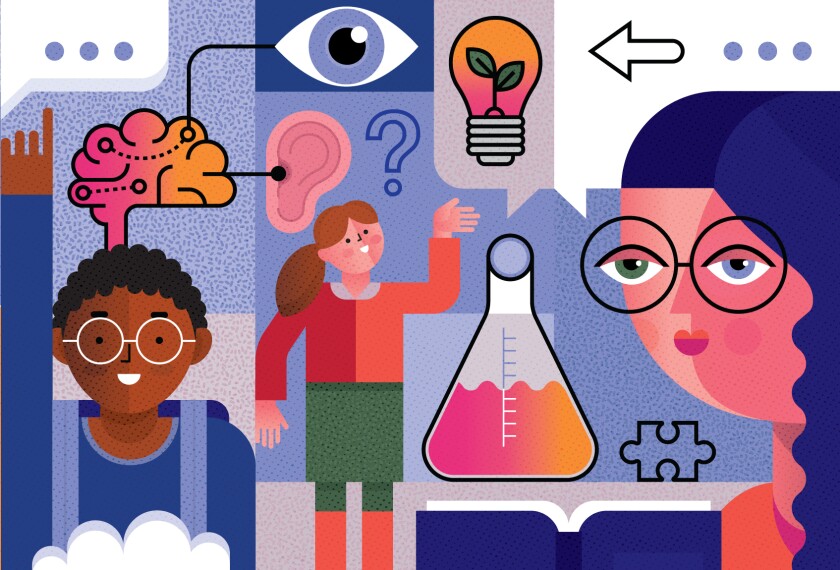Inequities in science and math achievement begin as soon as students enter school, a new study shows—a finding that suggests schools should be providing earlier support and encouragement for students of color in STEM fields, the researchers say.
The study, from researchers at Penn State, the University of California Irvine, and the University of Texas Health Science Center at Houston, focused on students who were high-performers—defined in the research as scoring above the 90th percentile in math or science assessments.
Starting in kindergarten, a greater share of white and Asian students met that marker than Black and Latino students. The gaps persisted, and in some cases widened, as students moved through elementary school.
These gaps are troubling because other studies have shown that elementary school math and science achievement can predict later interest and success in STEM, said Paul Morgan, a professor of education at Penn State’s College of Education and the lead author on the paper.
“There [is] hardly any work about how early these types of disparities start to occur in advanced STEM achievement,” Morgan said. “And that’s where our study comes in.”
“We wanted to try to identify the earliest onset that we could, because there’s reason to believe that the earlier we intervene the better,” he said.
Researchers analyzed data from the Early Childhood Longitudinal Study, a data set maintained by the U.S. Department of Education’s National Center for Education Statistics.
This study focuses on about 10,900 students who started kindergarten in the fall of 2010, analyzing their achievement on tests through 5th grade. In kindergarten, between 13 percent to 16 percent of white children scored above the 90th percentile on math and science tests, compared with 3 percent to 4 percent of Black or Hispanic children.
One other interesting finding: When other factors were held constant—variables like socioeconomic status, the average math and science scores at the child’s school, or the child’s working-memory abilities—the achievement differences between white and Hispanic students vanished. That wasn’t the case for Black students. Controlling for these factors accounted for some, but not all, the difference between white and Black children’s scores.
Need for more early-years STEM support
That finding means there are other factors the study didn’t measure that are causing the difference between Black and white students, Morgan said. What are they? “That’s not something we can answer in this current study,” he said.
But it’s an important area of further research—given both the implications for individual students’ future academic trajectories and the need to develop a diverse workforce of scientists and engineers, he said.
In general, the results suggest that creating more or better opportunities for math and science learning before kindergarten could be helpful for developing students’ interest and abilities, Morgan added. That could occur in a formal setting, like preschool, or at home.
Other research has lent support to that idea. A 2020 study found that when parents gave their preschool-age children frequent opportunities to do simple math problems and games at home, the kids showed better arithmetic growth and performance by the end of kindergarten than children whose parents didn’t do those activities.
And a 2018 study from research firm MDRC found extra support in the early years of school makes a difference. Researchers determined that participating in both a math-focused preschool curriculum and extracurricular math clubs helped close some of the gap between low-income kindergartners and their higher-income peers.





